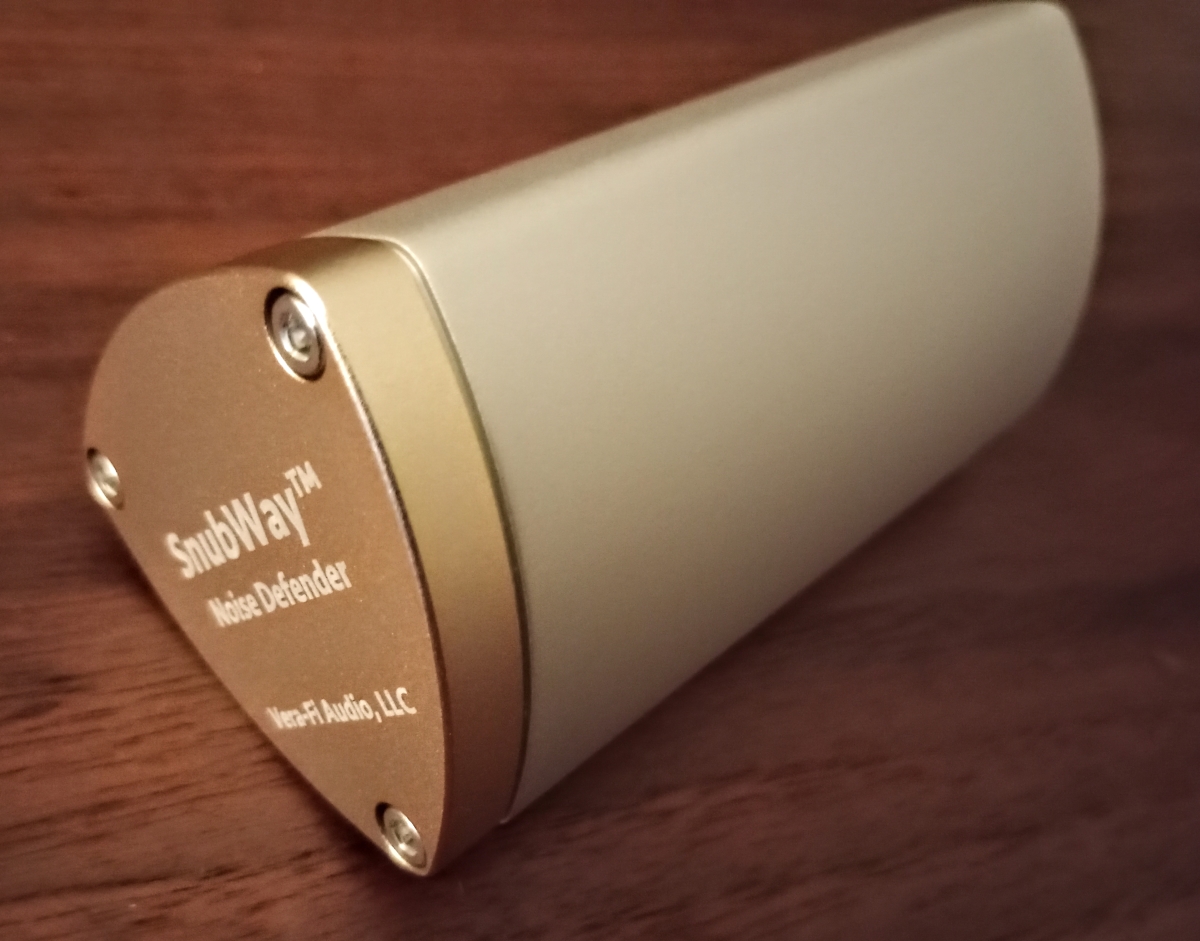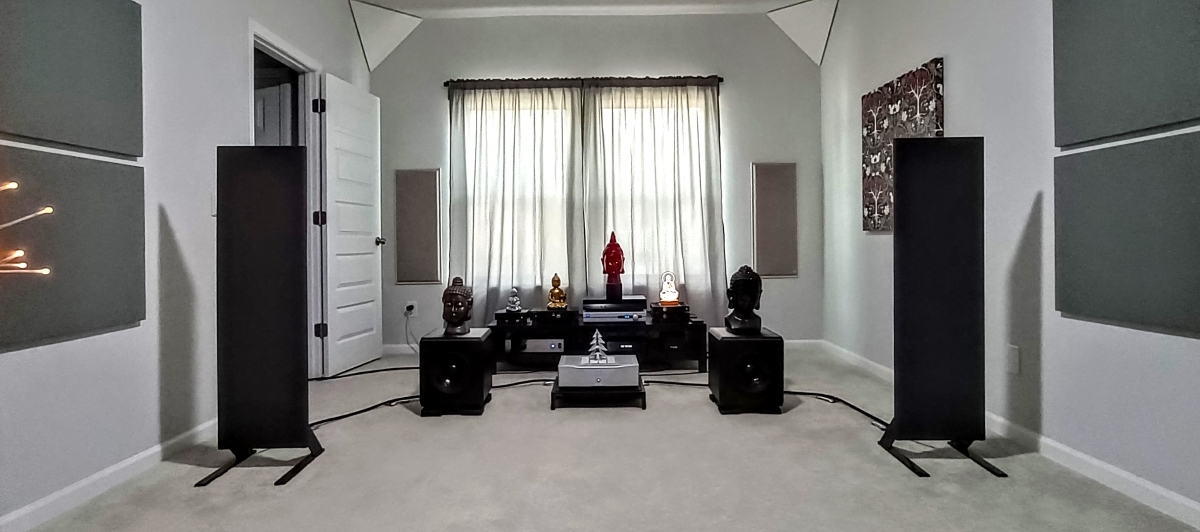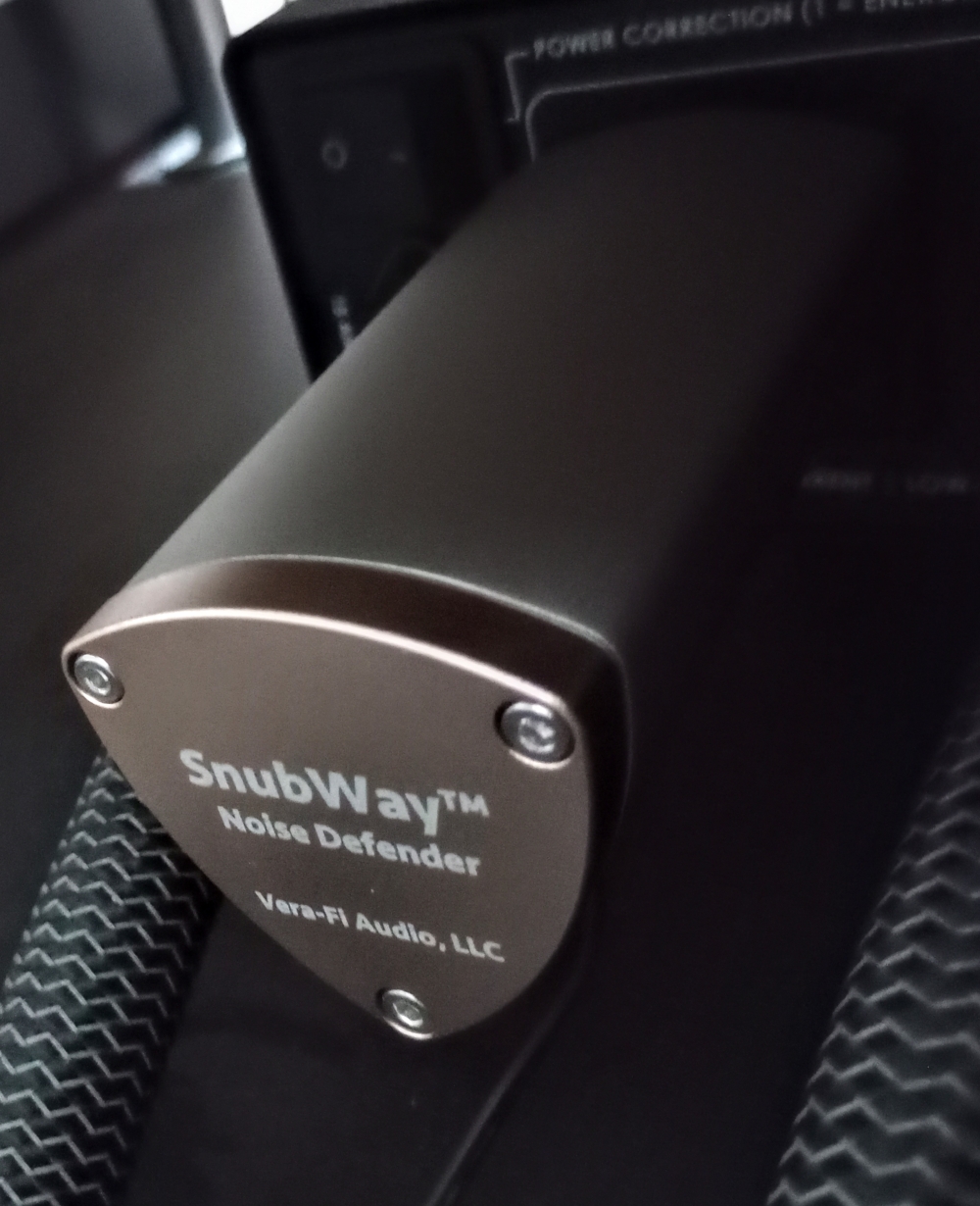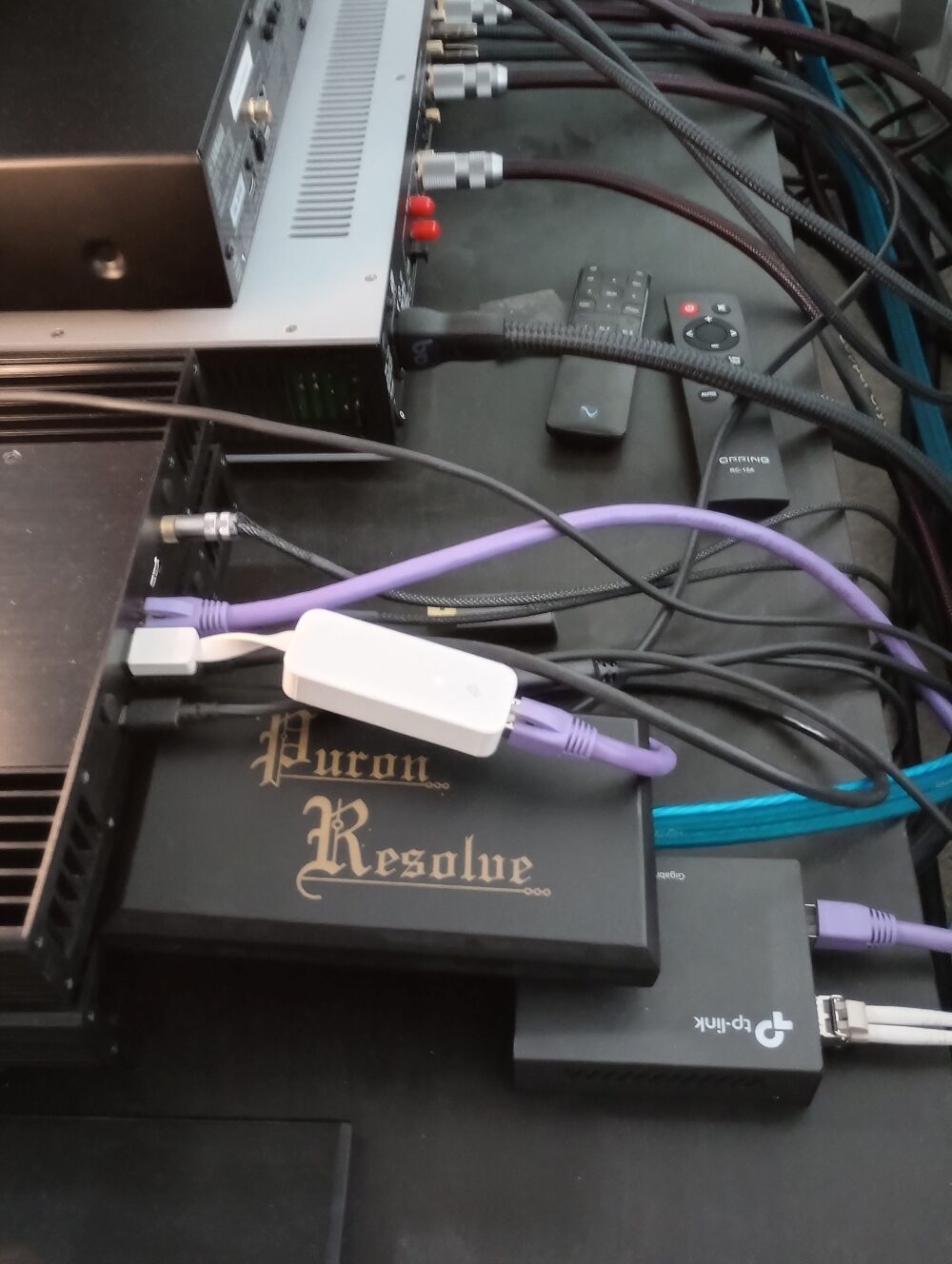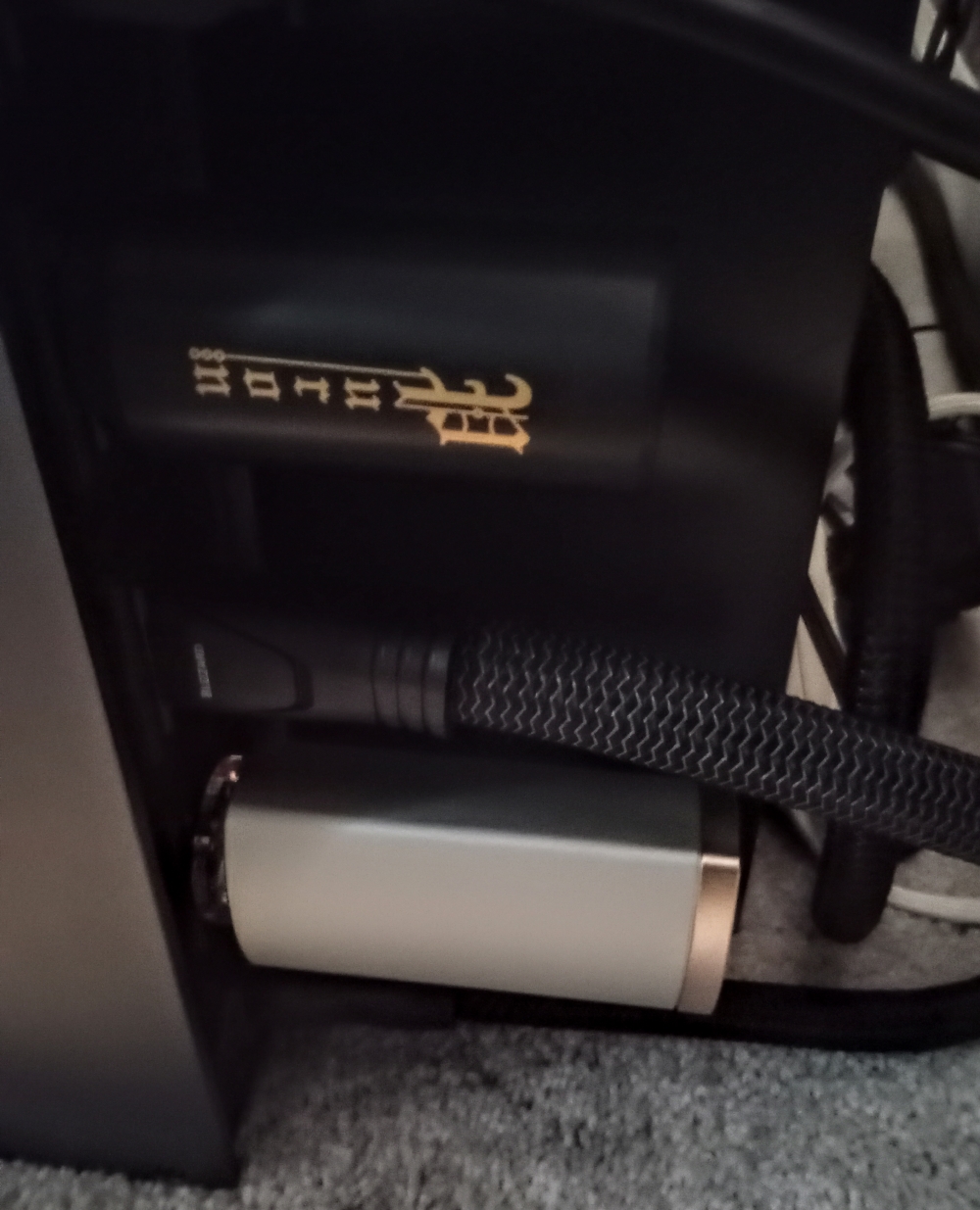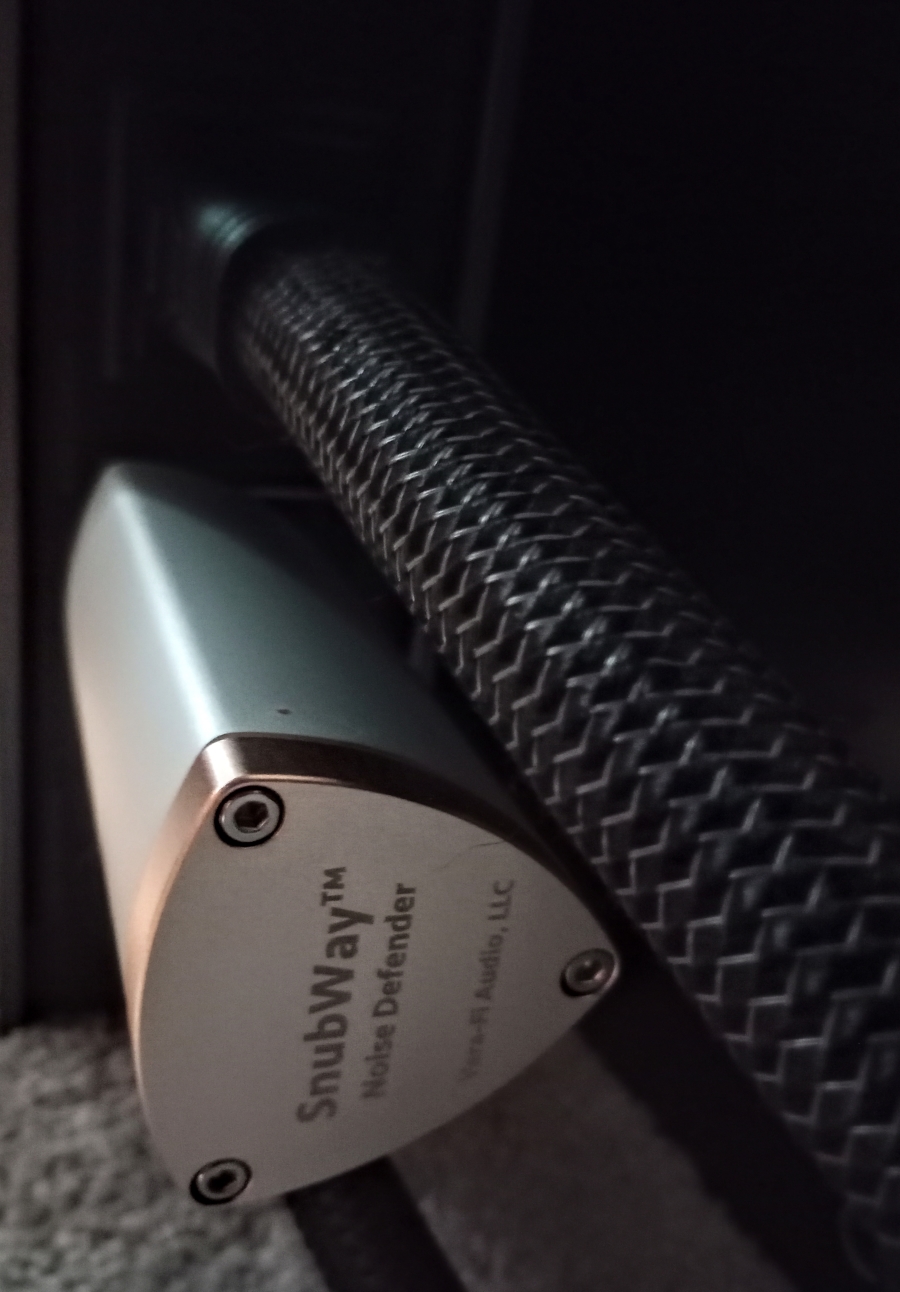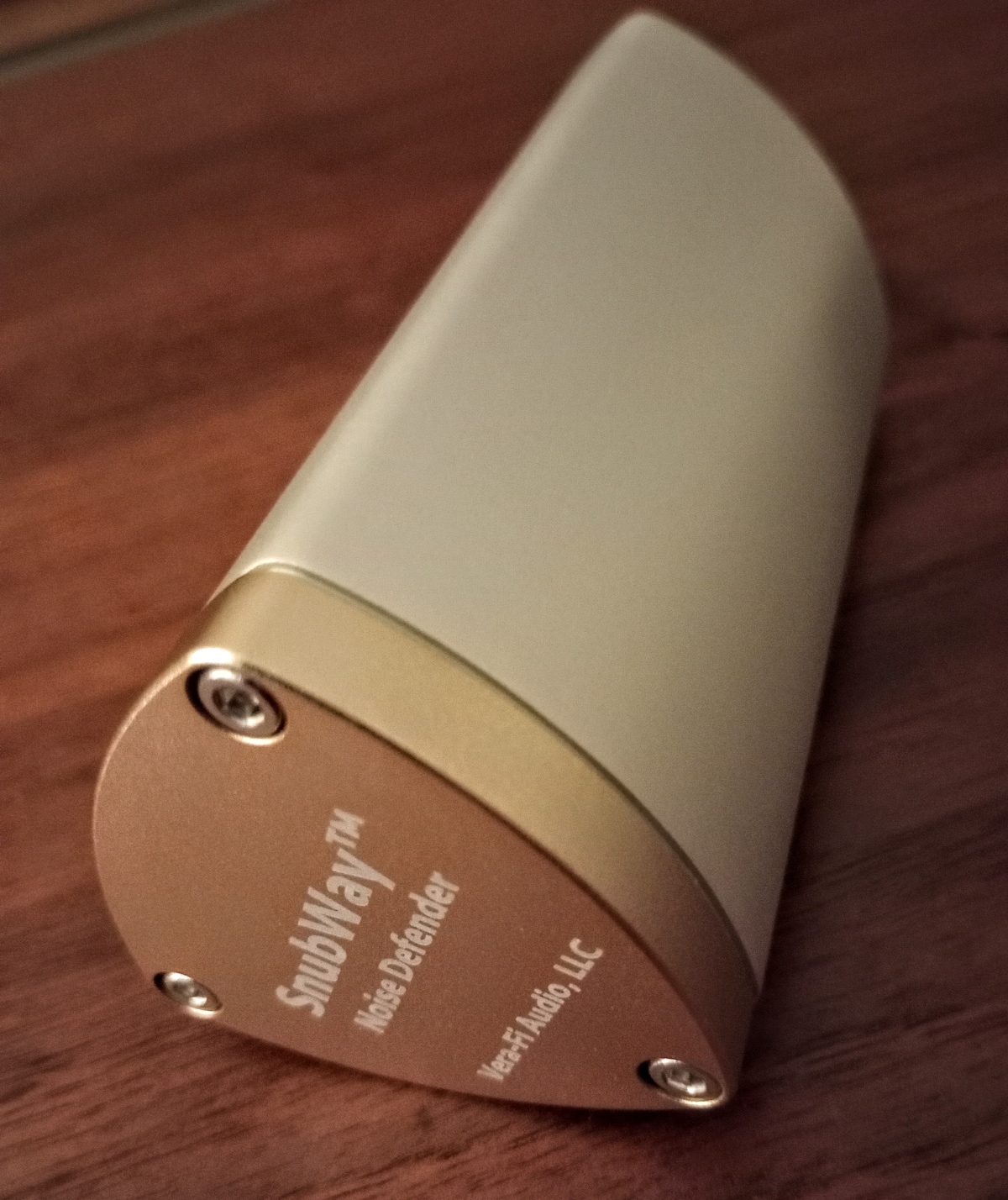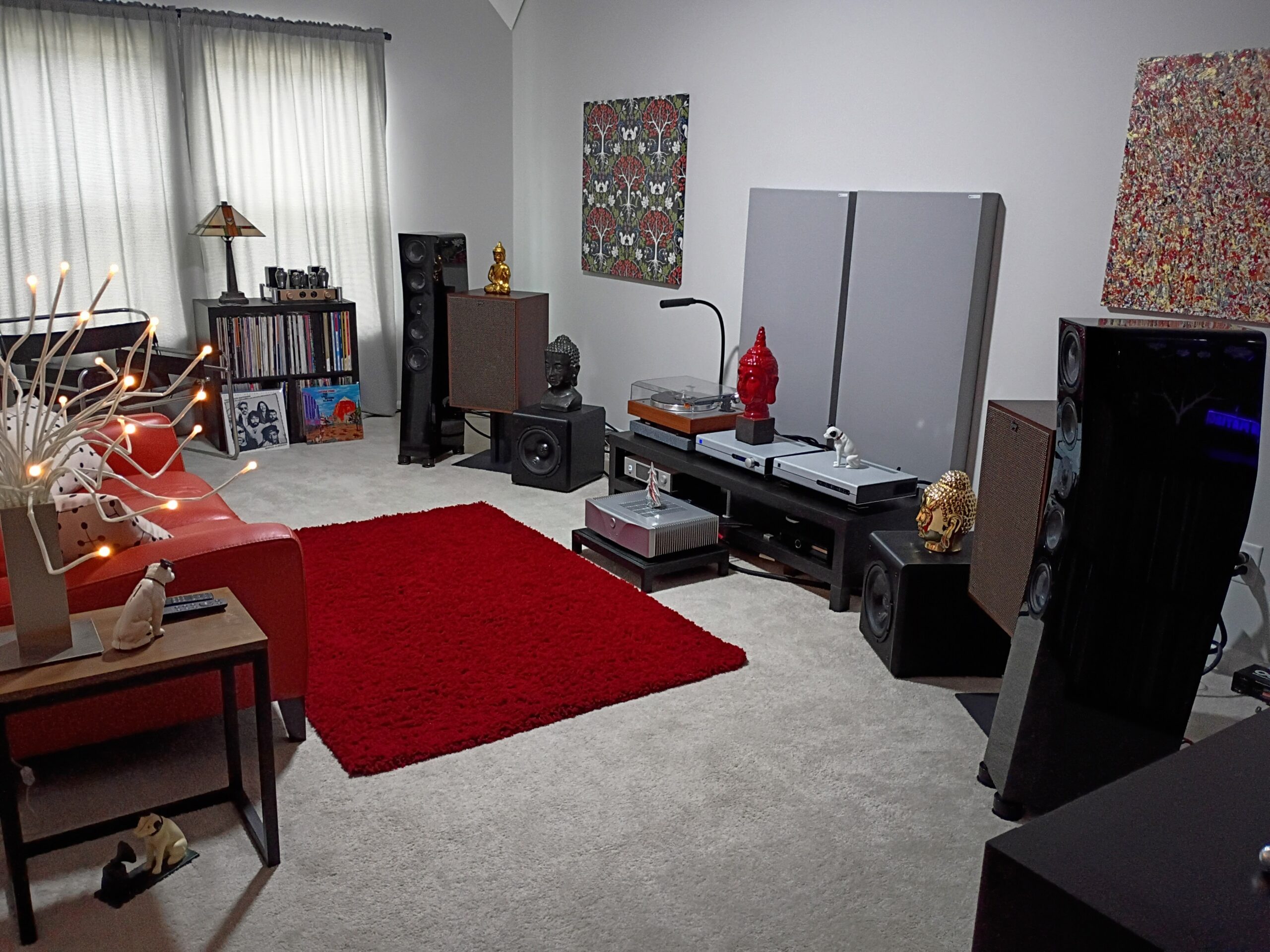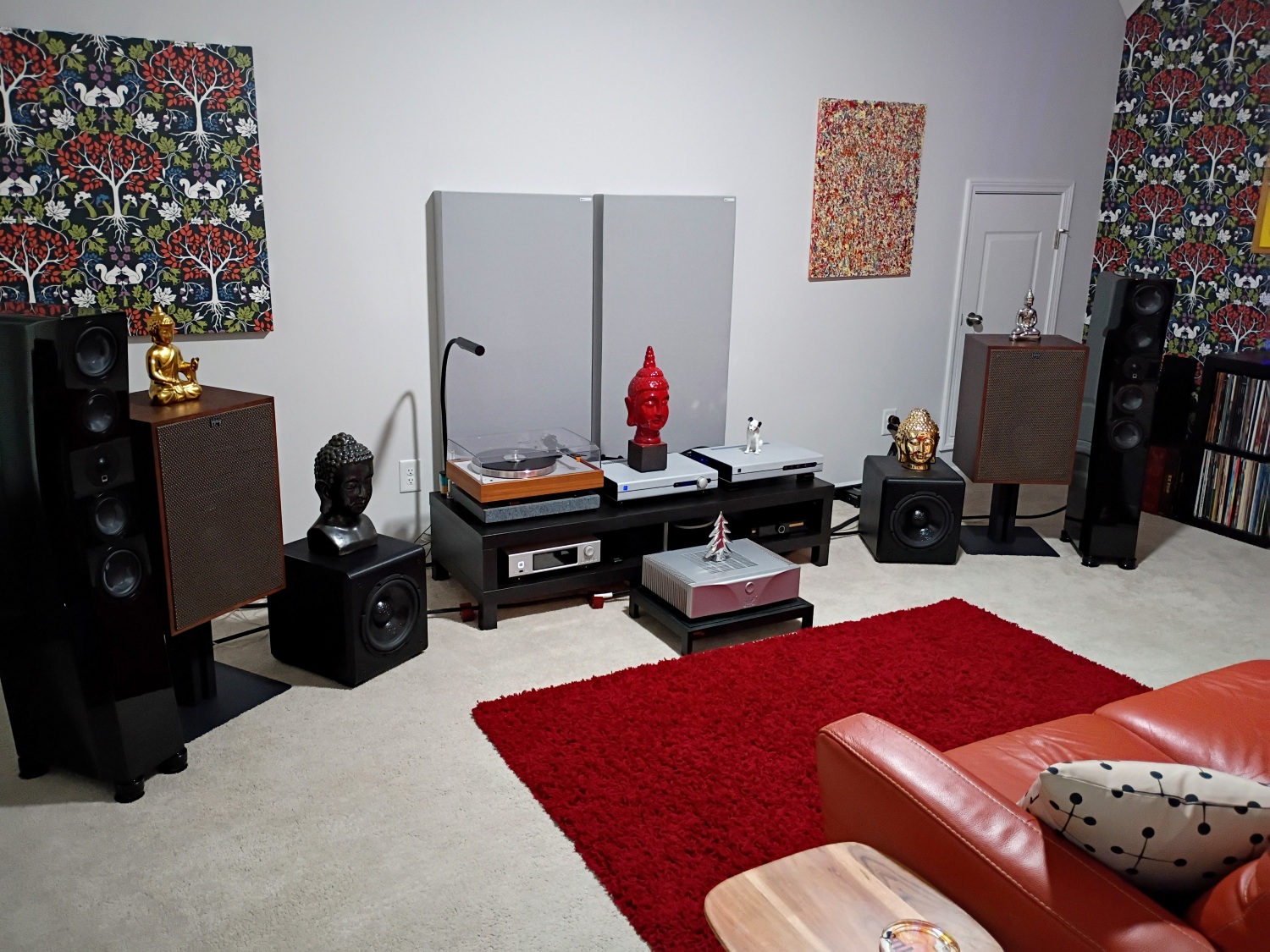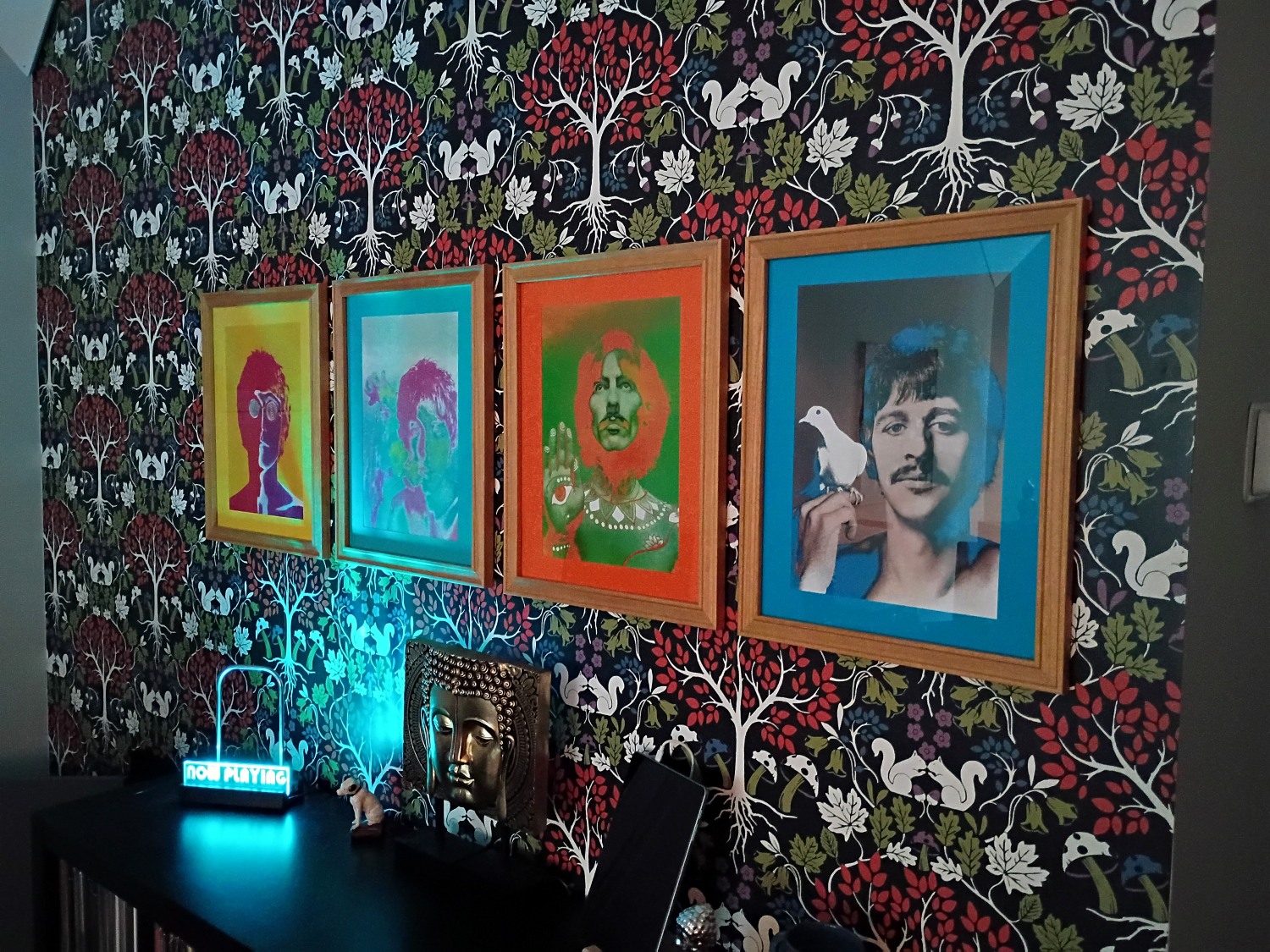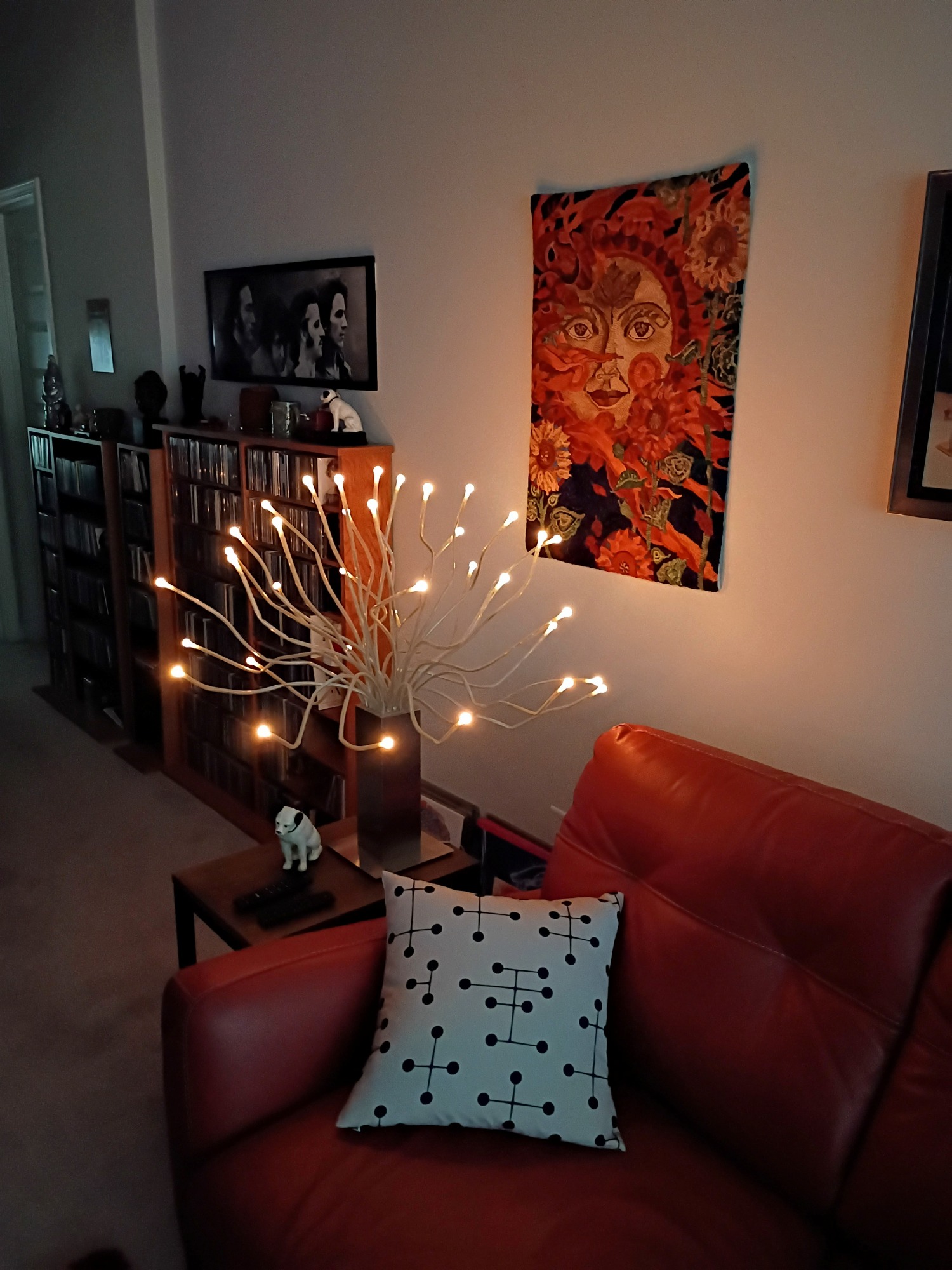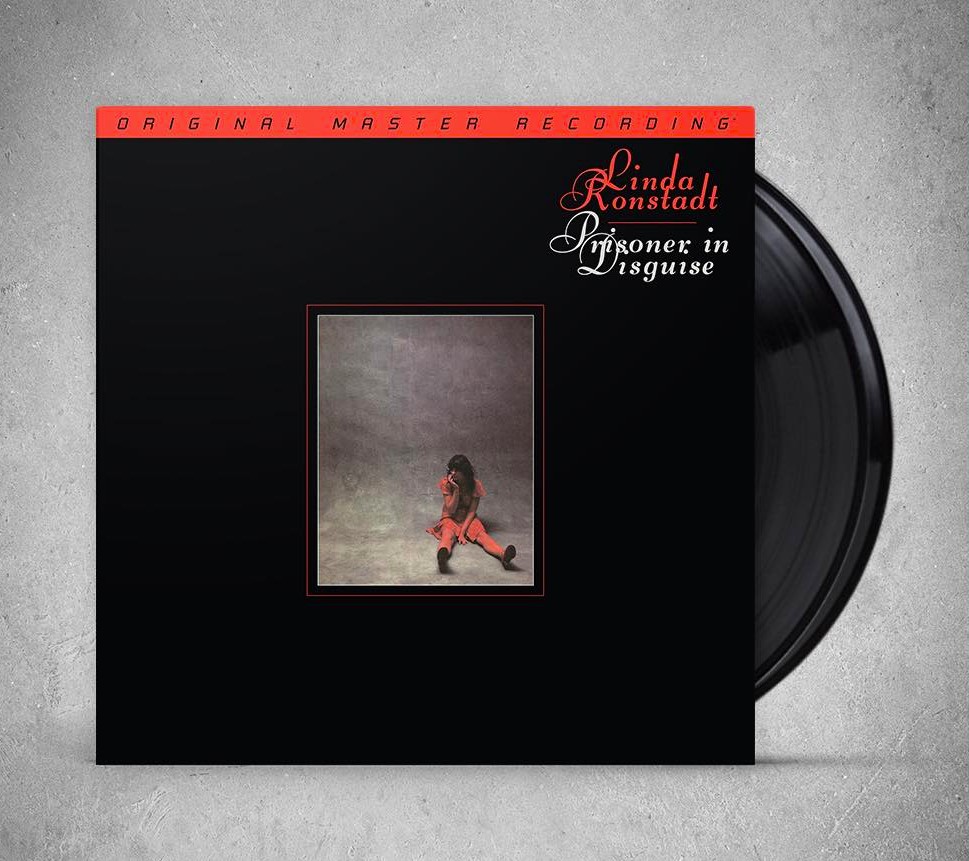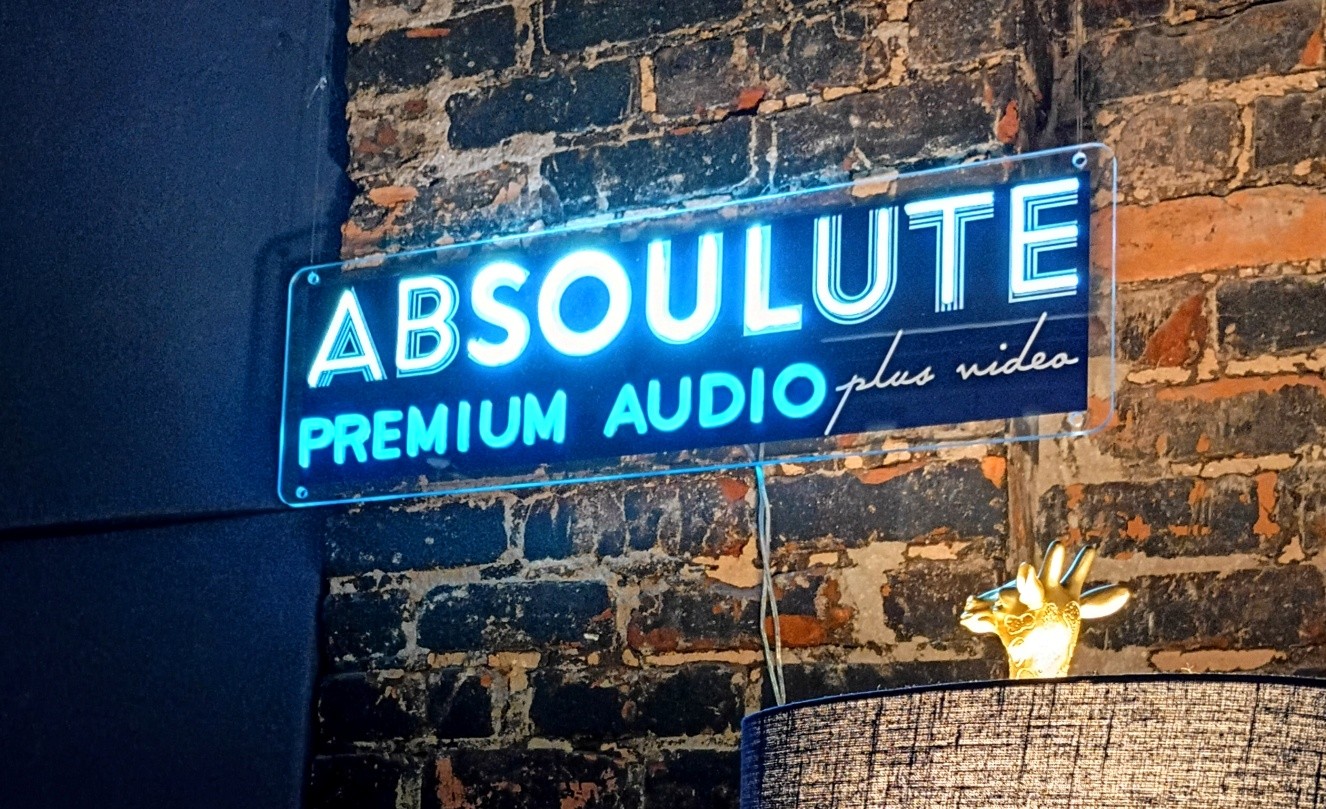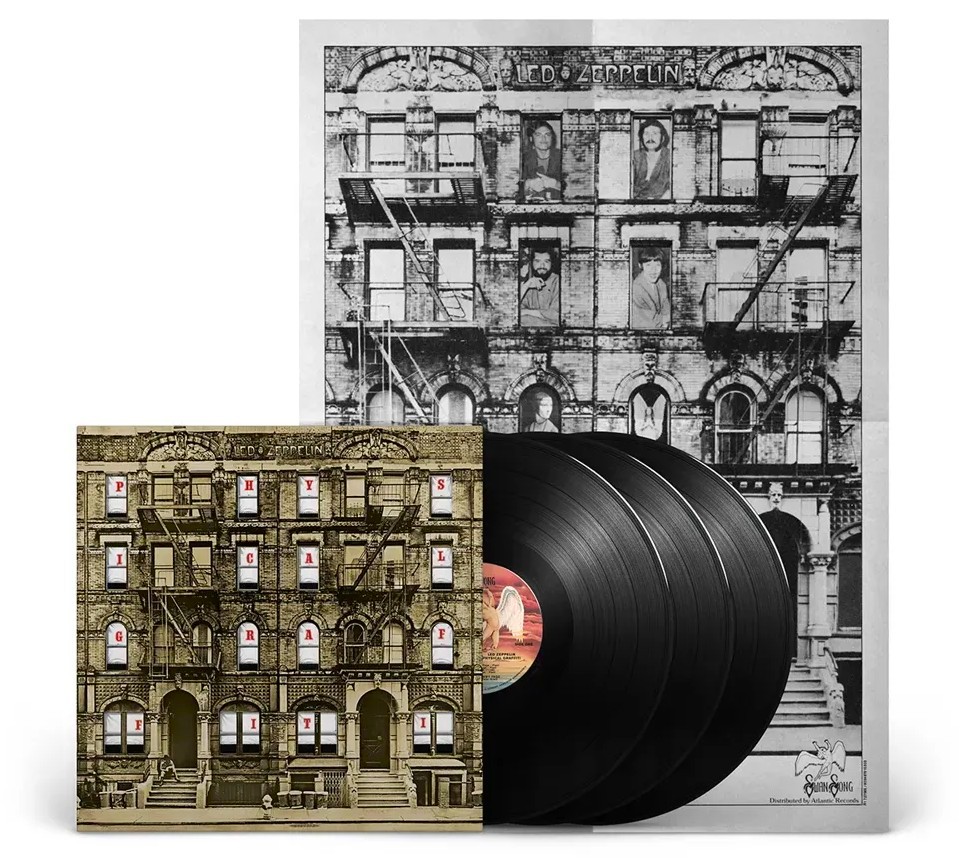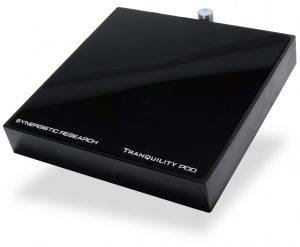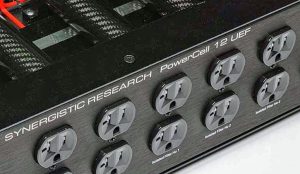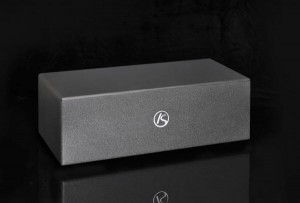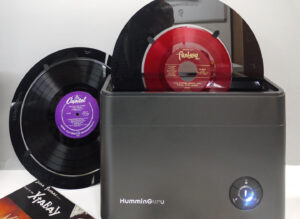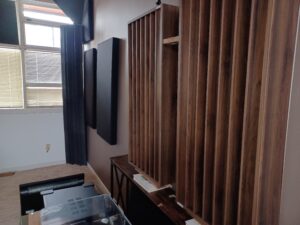I'm constantly on social media, quite often for audio-related purposes. And I'd seen teasers for months highlighting the ongoing development of Vera-Fi Audio's SnubWay Noise Defender, or more simply, SnubWay. The posts seemed to mostly focus on different variations of the case design, with only snippets of information regarding the actual function of SnubWay. With my daily thought processes usually clouded by a nearly nonstop stream of equipment evaluations and record reviews, it was fairly easy for me to allow any thoughts about SnubWay to simply float beyond my consciousness. That is, until a couple of weeks ago when Mark Schifter emailed to tell me that one of the units was on its way!
At that point, I went to Vera-Fi Audio's website and checked out their product page; I'm sharing some of their quotes regarding SnubWay's circuitry and operation: "SnubWay™ is an advanced parallel mains noise filter utilizing four discrete LRC filters tuned to absorb high frequency noise from switch mode power supplies (SMPS) and other sources in the 10kHz to 2MHz frequency range. That said, SnubWay's greatest range of effectiveness is in the problematic 400kHz-600kHz range, the area wherein most of the noise it's designed to eliminate resides. Today's homes have power lines that are constantly polluted with dirty pulse switching noises from SMPS that are so ubiquitous in modern homes. From our cell phone chargers to the power supplies for LED lamps and even our laptop computer supplies. They all utilize high speed switching in the 100kHz to 1MHz range, and they often leak noise back into the house AC mains. The SnubWay mains noise filter has multiple LRC tuned resonant snubbers to absorb this unwanted noisy energy from SMPS over a broad frequency range. The LRC filters utilize nano-graphite pulse absorbers to provide a broader frequency absorption band and high quality polyethylene film capacitors combined with precision wound copper coil inductors. The discrete filters are computer tuned and designed for optimal performance. The filters are arranged in parallel to absorb a broad range of sinusoidal and transient pulse noise sources. As its name implies, SnubWay provides multiple snubbers coming together in one spot—similar to a busy subway train station interchange where multiple train lines connect. The difference here is that the different "noise trains" come to the SnubWay, but they don't leave! SnubWay is designed to reduce and absorb SMPS noise in the mains by up to 28dB (this can vary and is dependent on customer specific equipment and house wiring arrangement and condition)."
Vera-Fi's online information about SnubWay was clear and concise, telling me all switch-mode power supplies—like the wall-warts connected to a multitude of devices throughout my home—are generating noise that leaks back into the AC power mains. And that the SnubWay Noise Defender is designed to help by absorbing or "snubbing" that noise from the AC spectrum. I reached out to Mark for some additional information regarding best placement strategies for the SnubWay. He told me since SMPS noise permeates your AC mains, placing the SnubWay nearest to the position of noisy devices should help snub that noise from the spectrum. He also said that in his own experimentation, placing it in the first position of a power strip or conditioner where most of your audio system is connected was a good starting place and seemed to yield more immediately obvious results. Mark also mentioned that flat screen televisions are one of the worst offenders in terms of adding unwanted noise into the AC power mains. He also recommended initially plugging the SnubWay into the desired outlet for about ten hours prior to doing any critical listening.
SnubWay Noise Defender Arrives!
SnubWay had a surprising level of heft when compared to, say, the Puron AC power conditioners. That's probably due to the solid aluminum billet its outer case is milled from; out of the box, it's a really gorgeous piece of custom made kit. Its proprietary noise reduction circuitry resides within that nearly jewel-like case that features a custom-made premium Viborg plug housing. Many of the new cables in my dual systems are from Audio Art Cable, and feature Viborg connectors; the Viborgs are brilliantly conceived and executed, and their appearance is not at all unlike something that might have come from the glass cases at Tiffany's! Some of the early online images for SnubWay show the device housed in several different case styles, including a transparent acrylic one that allowed you to easily see the circuitry within. While I got the impression that Vera-Fi might have been originally leaning towards the acrylic case, Mark told me that they were somewhat underwhelmed by the appearance of the prototypes, and that confirmed their chosen direction to go with the aluminum case. SnubWay has no LED lights to indicate its operational status; I'm totally okay with that, especially considering that in most of my preferred placement positions, it's not visible from the seating position anyway.
Adding another plug-in device to systems that already have multiple such devices inserted in the chain gave me pause to reflect on adding another. I currently have an ADD-Powr Electra Clear Eau4 device plugged into each audio system, but the Eau4's work by using an additive process. Each device adds "harmonic resonance" to the entire AC circuit they're plugged into—yeah, I know, maybe I'd be just as well off placing a tinfoil hat on my head—but the improvements they bring to my systems are audible and verifiable. And of course there's the Puron AC power conditioners, which shouldn't seem at all necessary considering the really robust AudioQuest Niagara devices that already reside in each system. Again, after placing a Puron AC in each system, the benefits were undeniable, so why should I question adding another plug-in? As they say on TV, too much is never enough, right?
After receiving SnubWay, prior to proceeding, I decided to take another look at Mark Schifter's social media posts about the product development for the device. While sifting through several months of Facebook posts, I stumbled onto one which featured a link to a diyAudio.com forum. Where Mark's partner Viet Nguyen—who created SnubWay's circuit design—was posting his ongoing testing of the device and was also showing outer case variations he and Mark were considering. Viet's posts featured a handful of spectrum analysis measurement charts of the noise floor of his ongoing tests, highlighting the spectrum prior to SnubWay being inserted into the system, then afterwards with SnubWay inserted. And those charts showed very real reductions in the level of noise in the AC line with SnubWay inserted into the system; you can see the information on that forum thread by clicking HERE.
Evaluating SnubWay in the Digital System
My dual audio systems are located in the upstairs of my home, and both upstairs rooms share the same AC circuit; everything except for the HVAC unit in the attic is on the same breaker. First off, in the Digital room, I placed the SnubWay in the first available series outlet in the room at the top of the stairs and left it there for at least ten hours, as Mark suggested. I have a playlist set up on my Euphony music server that I incorporate in all my reviews, and it contains selections that I'm infinitely familiar with, which makes spotting any perceived differences in the sound quite easy for me. I started playing tunes from that playlist for the evaluation process.
With SnubWay inserted into the first series outlet, I could not hear an obviously discernible difference. The next series outlet in the room has an AudioQuest Edison NRG power outlet in place there, and my AudioQuest Niagara 3000 AC power conditioner¹ is connected to one of its two available outlets. And, in turn, all equipment within that room is connected to the Niagara 3000, along with several computer audio devices in the streaming setup that are connected with wall warts. I placed the SnubWay in the other available AQ Edison outlet; that seemed like a logical choice to me. Again, I waited several hours, then listened to the same group of tracks as above, but placing the SnubWay in that position didn't produce a really obvious difference in the sound quality of the digital system. I remembered Mark's comments about placing the SnubWay in the first outlet position of a power strip, so I then placed the device in the first outlet of the AudioQuest Niagara 3000 conditioner for the next listening session. And again waited several hours before proceeding.
As in the first two attempts with SnubWay, I played a pair of tracks from Native DSD Music's DSD 512 reissue of Jim Anderson's excellent recording of Patricia Barber's Modern Cool, "Silent Partner" and "Company." Suddenly, with the SnubWay in place in the first outlet of the Niagara 3000, Patricia Barber's voice was rendered with improved transparency and delicacy, and took on a new level of silkiness and clarity. The individual instruments gained a greater level of realism, and the bass and drums as portrayed by the dual Vanguard Caldera 10 subs were even more impressively deep and impactful. Of course, I also had the Puron AC filter connected and Puron Resolve RFI Eliminators in place on the i2s digital connections of my Euphony Audio streaming equipment and my Gustard X26 Pro DAC. With the SnubWay in the lead position of the AQ Niagara 3000, the resulting sound was more spatially dimensional, and was presented with more impressive dynamics. Playing multiple tracks throughout the playlist from the likes of Jennifer Warnes, Cowboy Junkies, Yello, The Pineapple Thief, Peter Gabriel, and Cyrus Chestnut showed similar gains in more detailed musicality.
Since all my digital equipment is connected to the AudioQuest Niagara 3000, placing SnubWay in the first outlet position was the magic bullet for me in the digital room. And some of that equipment included SMPS wall warts. As Mark Schifter had told me, placing the SnubWay in a power strip with a series outlet configuration with other connected equipment had produced really positive results, and that was definitely the case for me. I'm not saying there wasn't any benefit from plugging SnubWay into the other outlets in the circuit, but the results were immediately obvious with it plugged into the AQ Niagara unit. Color me impressed!
Evaluating SnubWay in the All-Analog System
Buoyed by this discovery, I narrowed down my SnubWay placement attempts in the room that holds my all-analog, tube-based system. Prior to taking a listen, I also moved the Puron Resolve RFI Eliminators back into place on the inputs and outputs of the PS Audio Stellar Phono preamp, and placed SnubWay in the first outlet position of the AudioQuest Niagara 1200 unit. This system also has a Puron AC unit plugged into the Niagara 1200. I also relocated one of the Vanguard Caldera 10 subs into the room to assist the Vanguard Scouts with their low-bass presentation. It's been my experience that once SnubWay has been active for ten-plus hours, it's good to go in terms of making evaluations more quickly when moving the unit from one location to the next. I powered on my PS Audio Stellar phono preamplifier and my PrimaLuna EVO 300 tube integrated amplifier, then waited several hours before proceeding with my evaluation.
While waiting, I took time to revisit the diyAudio.com page with Viet's test results, and something jumped out at me that I hadn't noticed before. While Vera-Fi's specifications for SnubWay on their product page mainly references hi-band, high frequency noise reduction as a primary benefit, one of Viet's analysis charts showed measurements made with a moving coil phono preamp. The spectrum of noise reduction with SnubWay in place covered the frequency range from 400Hz to 20kHz, and showed a substantial reduction in the level of noise spikes. With the issues I'd previously noted in my analog room—especially related to moving coil cartridge noise—this was definitely encouraging news!
First off in my evaluation of SnubWay in the analog system, I put on two new Craft Recordings/QRP LP reissues, including Shelly Manne and His Men's At The Black Hawk, Vol. 1 and Art Pepper's Smack Up. While there are fewer offending SMPS powered devices attached to this system, my ProJect Classic EVO turntable is fitted with an Ortofon Quintet Bronze moving coil cartridge, which requires 65dB of boost from the Stellar phono preamp. That's a substantial amount of boost for a microscopically low level output signal! Even though I've been very happy with the sound I've been getting from this setup—especially since the incorporation of the Puron Resolve RFI Eliminators—I noticed an immediate uptick in the sound quality with SnubWay in place. The playback of the two Craft/QRP LPs was rendered with greater clarity and dimensionality than upon my first listen to them a few days earlier; Shelly Manne's drumming was more dynamic and showed greater image stability, and Art Pepper's alto sax was more firmly anchored in the center of the soundstage. That soundstage was wider and deeper, with a more detailed musical presentation. The Vanguard Scout/Caldera 10 combo suddenly featured deeper, more controlled bass, with better dynamics and improved liquidity. I was astonished by the overall improvement in the system with SnubWay in the playback chain.
Equally impressive results were heard with LPs from Impex Records, including their excellent 1STEP reissues of Patricia Barber's Nightclub and Stan Getz's Getz/Gilberto. Side four of Nightclub has become my new go-to for equipment evaluation in the analog system; the first three tracks, "So In Love," "A Man & A Woman," and "I Fall In Love Too Easily" are models of well-recorded jazz and jazz vocals. But side four's final track—and the LP's only bonus track—the classic "Wild Is The Wind" displayed a level of quiet that I'd never previously noted. It's a tour de force performance; Patricia Barber's vocal is much more crystalline with SnubWay in place, and is delivered with a greater sense of dynamics and realism. My experiences with Getz/Gilberto were quite similar; Joao Gilberto's elegant vocals and guitar work were presented with an even greater sense of delicacy. Astrud Gilberto's classic vocal turn on "The Girl From Ipanema" is rendered with more, you-are-there authenticity, and Stan Getz's nearly historic saxophone solo displays much more breathtaking realism.
I continued my evaluation with countless LPs from the likes of Jennifer Warnes, Linda Ronstadt, The Beatles, Yes, Bill Evans, Joe Henderson, The Pineapple Thief, Porcupine Tree, and Collective Soul, to name just a few. I was really impressed with the difference SnubWay made in my digital system—which has multiple power supplies and computer-oriented devices connected—but I actually expected to hear a difference. But in the analog system—where I had no real expectations—I was completely overwhelmed by the transformation of the sound! The Vanguard Scout/Caldera combo yielded impressive realism and dynamics, and with no signal present across the system, I could crank the PrimaLuna EVO 300's volume past the 3 o'clock point on the dial with nothing but the gentle, low-level hissing of the MC cartridge and the tubes. And this is the system where I expected only minimal—if any—improvement, and it sounds better than ever! Color me very impressed! When all is said and done, the SnubWay will definitely be remaining in the analog system.
One Final Test
Mark had told me about SnubWay's effectiveness in eliminating noise from the single worst offender in the entire house, which is your flat screen television. I don't have a television in either of the upstairs rooms that house my audio systems, but I do have a 65 inch 4K flat screen in my living room. I connected SnubWay to the same outlet the television is plugged into, and the transformation in the television's visual presentation was immediate! I hadn't even sat down yet to have a look, and I kept unplugging and replugging the SnubWay repeatedly while standing there marveling at the differences. Which included greater image clarity, improved sharpness, better color rendering, better contrast between lights and darks—everything in the picture quality was miles beyond what it was before.
Having only one SnubWay on hand made it inconvenient to judge whether the snubbing of the noise from the television that resulted in such dramatic improvements to its visual presentation simultaneously affected the stereo setups upstairs. And the television is on a different electrical circuit from the audio systems, so whether there's a cumulative effect of SnubWay on the whole house is still an unknown for me. I am certain that having additional SnubWays to use with the Niagara units in both stereo systems is definitely the way to go. I'll eventually need at least three SnubWays, and I imagine that most everyone else with fairly complex audio/visual setup(s) would as well.
Final Impressions
In my experiences with SnubWay, the greatest improvements were realized in localized implementations. Like using it in an equipment connected power strip—or as in my case, with the AudioQuest Niagara units, which are essentially super-duper, equipment connected power strips—which was the approach that yielded the greatest benefit. And that benefit is one that I can't live without—after experiencing the goodness of my two systems with SnubWay, and the improvements to my flat screen television, there's no going back! And Vera-Fi doesn't even tout the improvements to the television, they mostly highlight the excessive amount of noise flat screen televisions add to the AC power spectrum. I don't spend as much time in front of the tube as I do sitting at the stereo, so SnubWay will definitely go back to the analog room for now, where the effect was the most dramatic—but the improvement with the television was undeniable, much in the way as when I connected the Puron AC device to that same power outlet during that review. Televisions may produce a lot of noise, but they also respond very positively to an absence of noise as well!
Looking at the AC power grid, it's an absolutely nightmarish labyrinth on the larger, national scale. But just the AC wiring setup of most homes is a ridiculously crazy maze as well—but at least some of that noise can be contained by SnubWay. I can't stress this highly enough, but at its $295 MSRP, it's probably the lowest-priced product you can buy that will provide the greatest improvement to your listening (or viewing!) pleasure. Thanks again to Viet Nguyen for another brilliant and superbly functional design, and thanks to Mark Shifter for the opportunity, and for bringing it to my attention. SnubWay comes very highly recommended!
SnubWay Noise Defender
Retail: $295
Vera-Fi Audio
All photos courtesy of Vera-Fi and the author
¹AudioQuest actually refers to the Niagara units as Low-Z Power, Noise Dissipation Systems.






